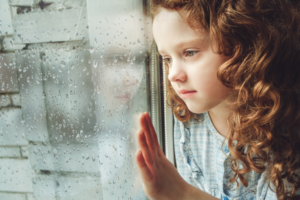The Child Archetype: How to Integrate It Into Your Life


Written and verified by the psychologist Elena Sanz
When you think about childhood, you probably think of concepts like joy, energy, and being carefree or immature. Indeed, these characteristics are typical of children and were with you during the first years of your life. However if, when you reach adulthood, these characteristics continue to constitute the core of your personality, you may experience problems in various areas. If this happens, it’s worth discovering if you’ve integrated your child archetype.
If you haven’t done so, your life might be marked by irresponsibility and lack of commitment as well as apathy, dissatisfaction, and fear. Therefore, if you’re currently going through a life crisis, or don’t feel comfortable with your circumstances or your way of being, reviewing your child archetype might be really helpful.
The child archetype
An archetype is a ‘blueprint’, a universal pattern of thoughts, emotions, or values associated with a symbol. Therefore, an archetype includes a series of characteristics that are universally recognized and considered. According to famed psychiatrist Carl Gustav Jung, these archetypes reside in the collective unconscious (shared by all human beings) and precede personal experience.
The child archetype isn’t based solely on the experiences that each individual has in their early years. In fact, it encompasses all the characteristics associated with childhood from the collective psyche.
The child archetype is the most heterogeneous and varied of all types and includes numerous concepts. Among its most notable variants are the beloved child, the wounded child, the abandoned child, and the eternal child. Each of them symbolically contains specific attributes with which any individual can be identified at a certain moment. Furthermore, depending on whether or not they’ve been integrated correctly, their impact can be either positive or negative.
Your child archetype is the first to take shape in your unconscious. For this reason, it’s difficult for you to detect. It can also condition you to a great extent. In fact, as an adult, many of your attitudes, beliefs, reactions, or limitations are a result of this. However, for you, they’re so normalized that you don’t recognize what’s happening.

Keys for detecting the child archetype
In your psyche, there’s a whole system of archetypes organized in different ways, some of which are more predominant than others. As we mentioned earlier, the child archetype represents ideas such as joy, play, innocence, or idleness. Therefore if, as an adult, you haven’t integrated it correctly, you might present the following attitudes:
- You have a tendency to return to the past and a desire to return to a simpler and less demanding life stage.
- Victimism. You have a constant desire to modify the past and an inclination to blame others for your own discomfort and individual trajectory. In addition, you’re unable to accept your own mistakes.
- You have a strong tendency to have fun and display a sensation-seeking attitude.
- You’re irresponsible and unable to commit to future projects. You also have a tendency to evade your obligations.
- You feel afraid and helpless and are unable to take charge of yourself. You’re submissive.
- You experience attacks of anger or emotional outbursts in situations that don’t go in the way you want them to.
- In emotional relationships, you display emotional dependence. Or, you may feel the need to find a partner who plays a parental role.

Integrating your child archetype
When your child archetype isn’t properly integrated, many areas of your life are affected. You may well experience inner discomfort, dissatisfaction, and existential emptiness. In addition, you may have work and economic difficulties, as well as the deterioration of your personal relationships. It’s as if, in some way, you’re being guided or conditioned by a child who refuses to grow up or is unable to do so.
To overcome this situation, you have to become aware that you’re an adult and that these attitudes are no longer functional and appropriate. Growing up implies taking charge of yourself, renouncing the child you once were, and knowing how to reposition this child properly into who you are now.
To do this, you may have to make certain changes and find a healthy balance between your childhood impulses and the assumption of your adult role. Here are some useful tips.
- Search for and create personal, work, or family projects that are fulfilling and commit yourself to them.
- Combine your responsibilities with leisure and fun. Make calmness and maturity compatible with innocence and creativity.
- Take control of your life and work on cultivating and developing your personality. Stop blaming others.
- Learn to put limits on the amount of time you allow yourself to be vulnerable.
In short, integrating your child archetype doesn’t imply repressing everything it represents, but rather adapting it to your current needs. In fact, you can continue to have a young, innovative, curious, and innocent mentality but at the same time be calm, responsible, committed, and mature.
All cited sources were thoroughly reviewed by our team to ensure their quality, reliability, currency, and validity. The bibliography of this article was considered reliable and of academic or scientific accuracy.
- Jung, C. G. (2014). The archetypes and the collective unconscious. Routledge.
- Von Franz, M. L., Mlekuž, M., Kušar, M., Zupančič, B. M., & Podbevšek, K. (1981). Puer aeternus. Boston: Sigo Press.
This text is provided for informational purposes only and does not replace consultation with a professional. If in doubt, consult your specialist.








